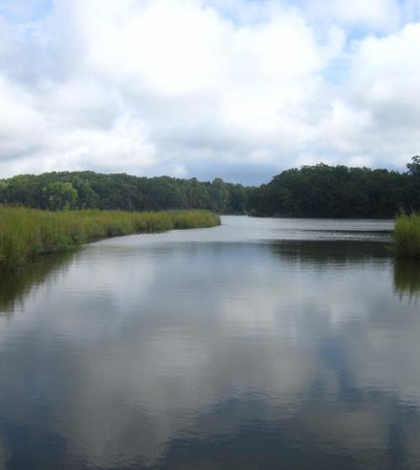Methylmercury Production Genes Found In Anaerobic Environments Worldwide

Scientists found genes in coastal wetlands that transform mercury into the neurotoxin methylmercury. (Courtesy of Grace Schwartz / Smithsonian Environmental Research Center)
Mercury gets released into the environment by a number of processes including the burning of coal and the production of steel and cement. Once in a wet, oxygen-free environment with the right compliment of microbes, methylmercury is produced.
A recent study has mapped the geographic and taxonomic distribution of hgcA and hgcB, two genes that together likely confer the ability to methylate mercury. The researchers found that the genes, which code for iron-sulfur proteins, are present in almost all anaerobic environments on Earth, but not aerobic ones.
Fortunately the genes were absent in human and vertebrate microbiomes, except for a single fecal matter sample which contained a rare microbe that is thought to live in the intestines of elderly people. Some other areas of concern were thawing permafrost soils, deforested tropical soils and engineered / contaminated sites such as facilities used for biomass fermentation and others used to degrade chlorinated compounds.
Top image: Scientists found genes in coastal wetlands that transform mercury into the neurotoxin methylmercury. (Courtesy of Grace Schwartz / Smithsonian Environmental Research Center)




0 comments